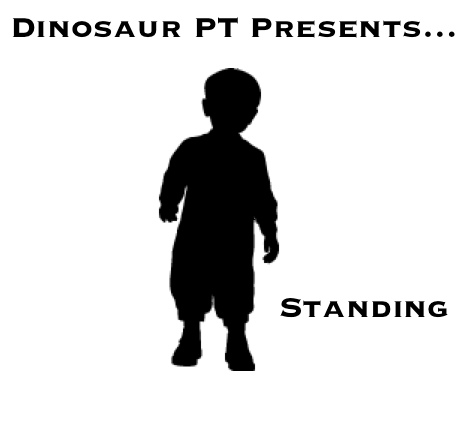Is your child holding on to the water to stand, maybe even cruising…but won’t let go and try to stand on their own? Don’t worry, I have some simple ideas to encourage independent standing, establish static and dynamic balance for an easy transition to walking!
motor learning
Motor learning occurs in stages and builds on previously acquired skills.Once the child masters, will stand sit independently and often with Crawl independently. once a child Shows strength, Further milestones require balance and coordination, and we can help their motor development in a healthy and rewarding way.
Intrinsic and extrinsic feedback are essential to the development of every new skill. For standing, intrinsic feedback involves proprioception, using the ground to push for support, finding a neutral position of alignment, and engaging the musculature necessary to maintain balance. We can use massage to provide graded input to the foot. Additionally, gentle joint pressure on the ankles, knees, and hips can help increase awareness of each lower body joint.
Encouraging barefoot walking whenever possible and allowing your child to bear weight on different tactile surfaces will help activate and develop the intrinsic muscles of the foot that make up the arch, which is integral to your child’s ability to stand and walk independently!
standing milestone
- Pull up and stand: 7-9 months
- Standing on a support surface: 8-10 months
- Stand alone: 10-12 months
Tips for Encouraging Independent Standing

shift focus
Take the focus off of your child and focus more on a toy or object that motivates your child (in this case, a beautiful duck we spotted at the park!). Instead of saying “Stand up and look at this duck”, say “Wow, I see a duck, let’s take a closer look!”


Provide dynamic support
use therapy ball As a dynamic support, it can be placed by the child’s side, in front or behind. This is a great way to reduce our reliance on external adult support and develop better body awareness as we aim for strength and stability.

use music
Find a song your child likes and have a “dance party.” Once your kids see you standing and bouncing to the beat, encourage them to join in. A good cadence can help encourage knee flexion/extension (promoting leg musculature activation), which is important for independent standing and walking. let the child hold one Whisk or tambourine Let them scurry and let go of your support!
 toy display
toy display
Keep items off the floor, using shelves or surfaces so items are placed at a height where children need to stand and reach. A shape classifier is great for this event. You can place different shapes at different heights to encourage squatting and standing up!


vertical surface
Use a vertical surface to allow the child to reach and cross the midline in a standing position. sucker & magnetic toy is great motivator!

mix it up
Change the environment if you can; visit parks, beaches, friends/relatives’ houses, playgrounds. Generalizing skills is important, and new environments offer new challenges and new motivations!

bring a friend
Use one-on-one companion modeling (with standing/walking companions). Give children the opportunity to watch and interact with their peers.through a softball Going back and forth can be a great motivator for standing up! It’s also a great way to combine hand-eye coordination!

slam dunk
Make your own basketball game, using different objects to throw into the container (raised higher to encourage standing). Think outside the box, like throwing rolled up socks in the laundry hamper!this Basketball hoop Very popular in our house!

corner stand
Use two different surfaces to create corners to build confidence in sustained standing. This also helps promote greater torso rotation and motion planning!

exercise
Bounce and Weight Shift therapy ball A fun way to develop the trunk strength and stability you need to stand and walk.

practice transition
Encourage your child to stand up from sitting to build independence in transition skills. This also helps engage the trunk and lower body musculature in preparation for standing.

sensory exploration
Let your child experience the different textures of the lower body and feet. This gives children the necessary intrinsic feedback their bodies need.we like sandbox Get a great sensory experience that promotes gross and fine motor development!

go baby go!
Building your confidence is half the battle, so be sure to succeed at every activity and embrace your inner cheerleader! Inspire, encourage, participate!
set up a red flag
Be sure to contact your pediatrician or Pediatric Physiotherapist If you notice the following at 12-15 months:
- The child cannot bear weight on the legs
- Child cannot be pulled to stand or remain standing for more than a short while
- The child shows marked stiffness when standing
- The child is standing with only the arms pulling, the leg muscles are not used
- The child shows a marked tilt when standing, bearing weight primarily on one side
- The child is not making incremental progress in attaining motor milestones
Pediatric Physiotherapist Can provide activity recommendations, equipment ideas, and help evaluate any potential causes of developmental issues you may have. No judgment, only helpful guidance awaits if you contact the right professional!
For more ideas for encouraging independent standing, read Toys that encourage standing up!

For future milestones, please read Teach your child to walk!

learn more about dinosaur physiotherapy!
To continue the conversation, follow us Facebook and instagram



